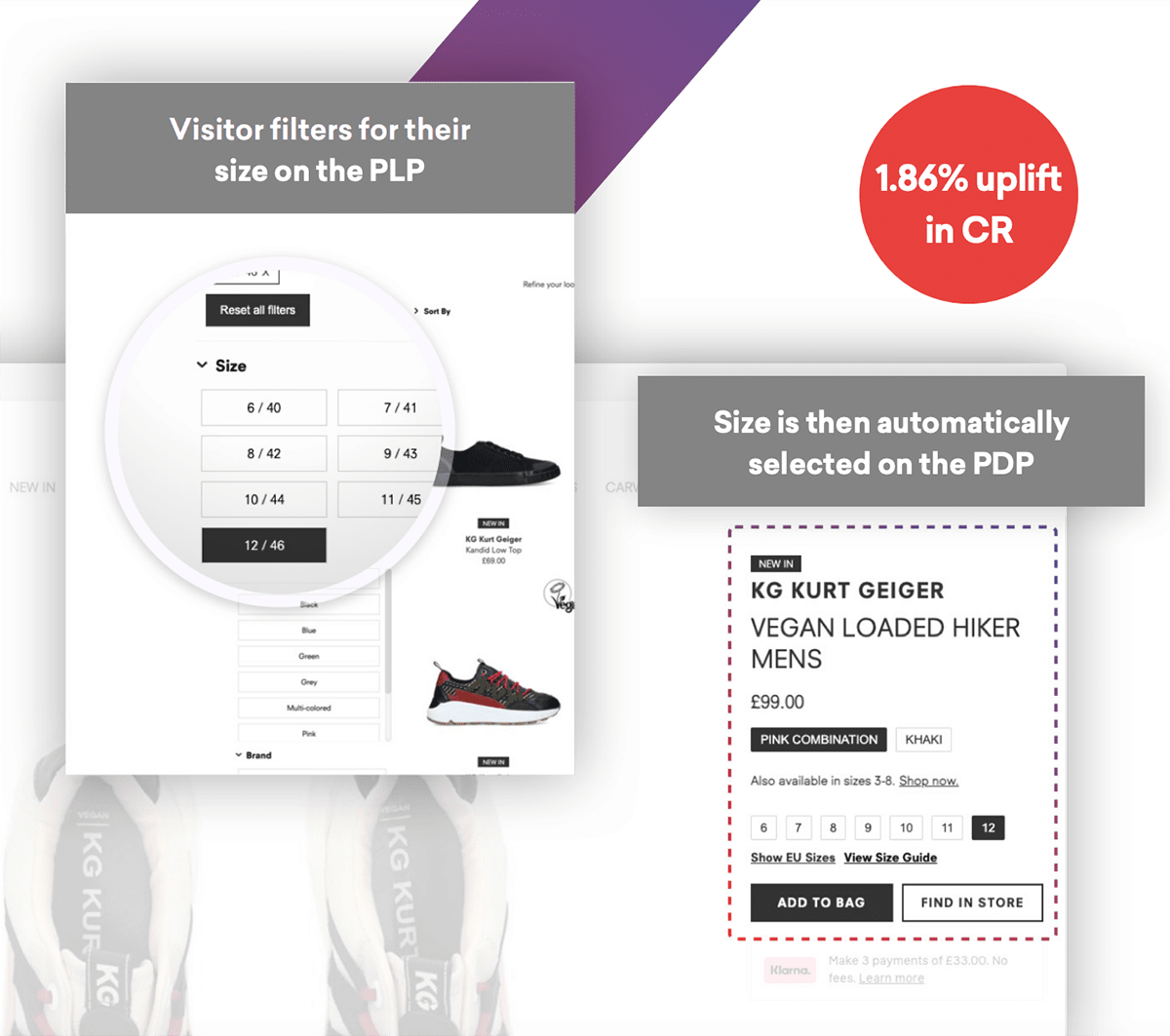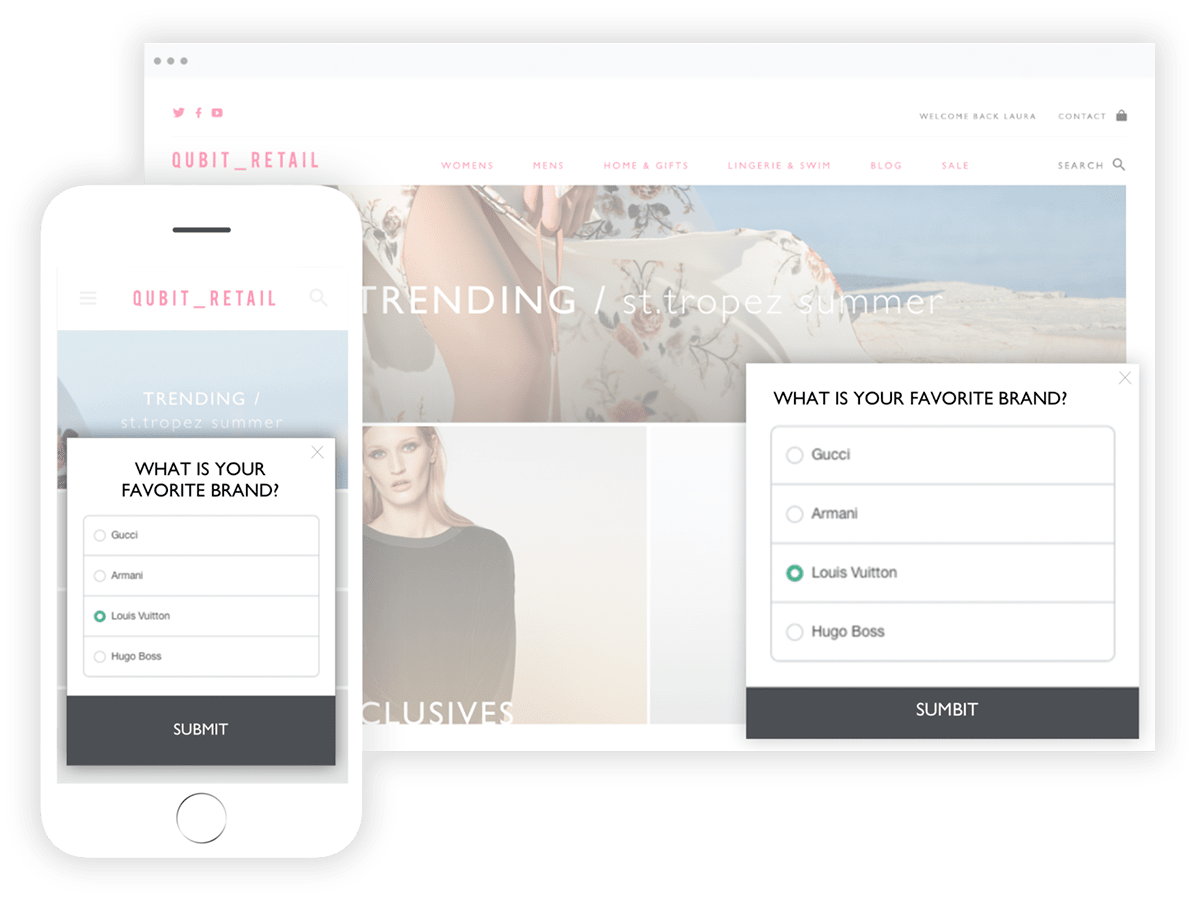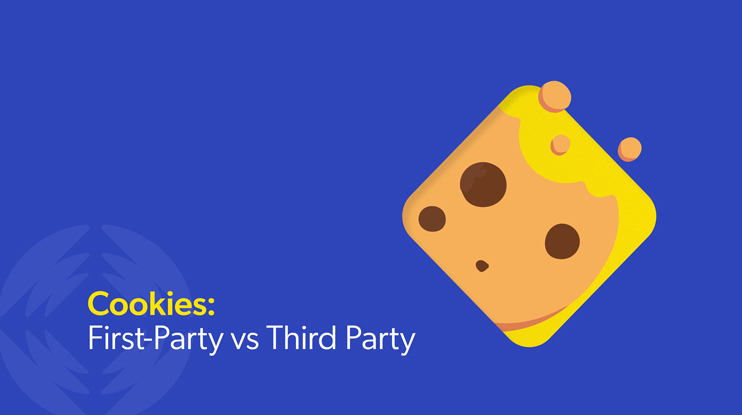Amidst a data privacy revolution, many brands are concerned about the future of personalization. Learn everything you need to know about 1st party cookie vs 3rd party cookie. Plus, how to create a privacy-first personalization strategy.
The third party cookie has long been a major player in ecommerce personalization strategies. But with many browsers now blocking (or working toward the complete blocking of) this type of cookie, brands must begin to look elsewhere to develop effective user personalization with privacy in mind. Let’s discuss the different types of user data, as well as which support privacy-first strategies.
First party cookies vs third party cookies: What are the differences? And what about zero party data?
- Third party cookie. Third parties leave small pieces of data called “cookies” on a user’s web browser after a site visit. Third party tracking cookies collect user data enabling the tracking of user behavior across the web. These are used heavily by digital advertising companies to create targeted ads. For instance, a google ad will create a cookie on a user’s web browser that will then monitor user activity on multiple websites. This behavior data is used to show those users product suggestions or further ads for products they searched for on different websites.
- First party cookie. These cookies are website-specific. A website will directly place a cookie on the user’s browser when they visit to collect first party data about their behavior on that website. This cookie type, also called “performance cookies” typically contains very detailed records and analytics for each website visitor. That data is then used by the website owner to improve their user experience. For instance, Google Analytics uses these cookies to capture data about web visitors and various aspects of the user experience.
- Zero party data. Introduced by Forrester research, this kind of data refers to data that customers intentionally and proactively share with companies.
Now, let’s get into the future of cookies. What are the most important emerging trends when it comes to data and data sharing of customers?
The Death of the Third Party Cookie
Historically, third party data was a critical piece of any personalization strategy. This wealth of data allowed ecommerce companies to fine-tune each user’s customer experience based on their activity across the web. It enabled, among other things, digital marketing targeted advertising by leveraging user’s personal data.
While great for any marketer, in many ways, it’s great for shoppers too. Seeing a relevant ad that’s in line with what you’re searching for can be a big plus. Imagine getting recommendations for high-heel shoes when you’ve been looking at running gear. Not very relevant, unless you’re training for a Guinness World Record.
However, the privacy revolution has officially arrived! And as a result, third party cookies are going away because they’re perceived as a threat to user privacy.
Now, this introduces tension. Shoppers want their experiences to be highly personalized, but they don’t want their data to be misused to serve corporate business interests. Cue the personalization vs privacy paradox.
What are the Implications for Brands and Retailers?
Third party cookie deprecation may sound the death knell for old-fashioned approaches to ecommerce personalization. Yet unlike what catchy headlines claim, it doesn’t mean that our future will be completely cookieless. After all, first party cookies — and the data they provide — aren’t going anywhere.
What these recent privacy developments do imply is that the future will definitely involve less cross-site tracking thanks to the increased efforts to block third-party cookies, fingerprinting, and other tracking technologies.
As a result, ecommerce companies that seek to address the personalization vs privacy paradox and revamp their personalization strategies must look for a solid, compelling alternative to the third party cookie.
Will the Real Privacy-First Personalization Please Stand Up?
Brands and retailers don’t need to despair. Just because personalization initiatives can’t use browsing data from multiple sites doesn’t mean that companies must resort to guesswork. There is an alternative.
Companies who wish to embrace privacy-first personalization without compromising on relevance should focus on a zero and first party data strategy.
A Look at First Party Data
First party data is best characterized as behavior-based data associated with a tracking cookie. This data contains the course of a user’s movement on a company’s website providing very detailed records of what visitors do when navigating an e-store. With first party data, brands and retailers can glean valuable indicators into an individual’s interests and intent. Every user click is a potential opportunity for contextual advertising which provides the user with specially selected information.
What is Zero Party Data?
This category was introduced by Forrester research and refers to data that customers explicitly and proactively share with companies. Customers volunteer zero party data through interactions like completing forms or surveys. This data can include personal information like personal needs, preferences, or interests in exchange for clear value. Retailers can use this information to build experiences that better serve both new and returning customers.
First party data and zero party data are actually very complementary. When combined, they help brands and retailers deliver highly effective, privacy-aware personalized experiences.
How Do You Leverage First Party Data to Capture Shopper Intent?
First party data can support contextual personalization which is a good starting point when tailoring experiences for your customers. This kind of personalization is based on referral data, local weather, and sometimes geo-location. However, it won’t capture the customer’s current intent, only the context in which they’re browsing on your website.
Shopper intent can be inferred from your shoppers’ onsite behavior, which is captured by first party cookies. Retailers can study how users move around the site, what they click on, add to their cart, and how long they hover the mouse near objects. These clues can effectively work as windows into a shopper’s mind.
Leveraging visitor signals within a browsing session is particularly useful when users visit a site for the first time, or when they simply choose to remain anonymous. This is known as a ‘cold-start’ scenario.
Make no mistake — cold start problems are more frequent than one might expect.
What is the Cold Start Problem?
The term “cold start problem” actually originates from the automobile industry — when it’s really cold outside, a car engine has difficulty starting up, but once it warms up, it runs smoothly. Similarly, the best recommendation systems excel at guiding users to well-received options, but they often have difficulty serving new users. Let’s review a few types of cold-start problems.
In the world of ecommerce, a classic version of the cold-start problem refers to the difficulty of recommending products to genuinely new users. This is a significant challenge for brands and retailers, as a very large portion of the transactions taking place on their websites involve new users.
A cold-start scenario can also refer to when user data is available yet no longer relevant. Consider how data about a backpacking trip you took last year may no longer be relevant to the upcoming family-friendly trip with your children you’re shopping for. Or how a student looking for a bed may buy a twin mattress when sharing space with a roommate —but a few months later upon graduating, may opt for a queen instead to furnish a new apartment.
Finally, cold start problems can also occur when users have different interests at different yet closely spaced points in time. For instance, depending on their mood or their social context, users may be interested in watching different movies.
These are all kinds of cold-start situations where focusing on real-time intent and leveraging in-session clickstream data can prove extremely helpful.
Examples of First Party Data Personalization at Work
In all of the above cases, personalization based on first-party behavioral data can prove extremely effective in deriving shoppers’ intent from user behavior.
Because this might still sound abstract, we’ll consider a couple of examples to show how privacy-first personalization can actually work using first-party data.
Session-aware Recommenders
The first example concerns the rise of so-called session-aware recommenders that leverage AI. These provide personalized recommendations by understanding visitor intent based on interactions observed in an ongoing session and analyzing the search and browsing behavior in real-time. For example, imagine I’ve searched for some golf pants on an ecommerce website, which I’ve promptly added to my cart.
Session-aware recommenders may start providing me with golf-related items automatically. This is a key feature and a game-changer that helps ecommerce players deliver personalized shopping experiences without the need for high volumes of data or logged-in users. These session-aware recommendations must remain relevant throughout the visitor’s session by also detecting intent changes and adjusting accordingly. For instance, you wouldn’t want to keep seeing golf accessories once you start shopping for your next tennis outfit.
To this end, Coveo has recently developed cutting-edge technology to provide Personalization as you go,” using shoppers’ signals to tailor and improve the experiences that customers receive in real-time.
Tailored Experiences Triggered by On-site Behavior
Customer intent can change in a heartbeat, so it is critical to be able to understand shoppers’ behavior based upon every single click and customer data point and to serve relevant experiences tailored to such intent.
For instance, in the example below we see how our customer Kurt Geiger enabled more seamless visitor journeys by deploying a ‘Save Size Selection’ experience.
Customers who filter for their size on the Product Listing Page (PLP) and then navigate to a Product Detail Page (PDP) within the same category, will automatically see their size pre-selected for them, making it as easy as possible for them to purchase the product of interest in the right size.

How To Use Zero Party Data to Deliver Personalized Shopping Journeys?
Inferring preferences, goals, and needs from the traces left by your shoppers can be great. But you can complement your first-party data with zero party data shared by your customers for an even better user experience.
Using zero party data, brands and retailers can better understand why consumers behave in certain ways and in which contexts.
What are the Benefits of Zero Party Data?
- Quality and accuracy: Third party data isn’t always that accurate. In fact, it’s often outdated or incomplete. Since zero party data comes directly from the customer, it tends to be the most accurate type of data. But you still have to make sure you ask the right questions, as people sometimes have limited insights into their abilities or even preferences. For example, while most people say they are better than average at a particular task, it’s statistically impossible that more than 50% of a population is better than average in any ability. So, asking customers to choose whether they are reasonably experienced snowboarders, seasoned snowboarders, newbies, etc., might not lead to the most accurate and meaningful self-segmentation.
- Compliance: Being compliant for zero party data collection has little to no risks because you know the source of data and how it was collected.
- Transparency: Zero party data disclosure is based on an existing consumer–retailer agreement. Consumers know what information they are sharing and why, so ultimately they can decide how much to reveal.
What are the Drawbacks of Zero Party Data?
What’s not to love about zero party data? One obvious downside of zero party data collection is that if you ask customers for too much information at once, you risk overwhelming them.
More generally, a strategy based solely on zero party data can inevitably introduce friction in the shopper’s journey as it would require the user to answer questions or select from choices frequently.
There are ways of overcoming these concerns, though.
First, always try to spread out your requests. It’s recommended to infer preferences, needs, and goals as much as possible and ask customers to self-report only sporadically. It’s best to ask users to self-report when they can easily identify the value they will gain from sharing information about their preferences.
Second, while it’s true that consumers get better personalization, product recommendations, and service suggestions by providing zero party data, brands and retailers can further encourage disclosure with financial incentives and rewards. For example, offering a discount if a customer takes a survey.
How to Capture Zero Party Data?
Collecting zero party data is typically conducted in a conversational format, allowing consumers to offer only the information they want in a format they agree with. In fact, you may already have several tools at your disposal for collecting zero party data.
Self-segmentation tools are one example, where you ask your customers to tell you which audience segment they belong to. By carefully tailoring your questions and suggested segments, this can be a very effective strategy for personalizing the buying experience for personas.
Self-segmentation can be as simple as asking visitors whether they are home owners, renters, or looking for a new property so that they receive relevant information. It’s best practice to avoid ambiguous language, fuzzy categories, or overly subjective assessments in self-segmenting questions in order to capture the most relevant data.
Surveys can also be powerful tools to gather information about people’s preferences, wants, and needs. They allow customers to express their preference for a specific brand, category, or type of product they are interested in.

Similarly, as illustrated in the example below, customers can express preferences about the categories and types of products they are interested in.

Being able to segment your visitors according to their survey responses will be critical to targeting them with the most relevant experiences.
To help you do this, Coveo offers powerful tools to add context to site behavior, asking your customers more about themselves, and listening to the feedback.
In Summary
Retailers who wish to embrace privacy-first personalization without compromising on relevance should look for a technology vendor that can create personalized shopping journeys with first and zero party data. Machine learning that can quickly detect intent based on a visitor’s interactions and tailor experiences for “cold start” shoppers is an especially helpful feature to consider.
Dig Deeper
Looking for deeper insights on how to optimize your conversion rate?
In our Ultimate Guide to Conversion Rate Optimization in Ecommerce, you’ll learn how to leverage synergies between touchpoints, harness the full power of analytics, and a three-step testing process for encouraging outcomes.


